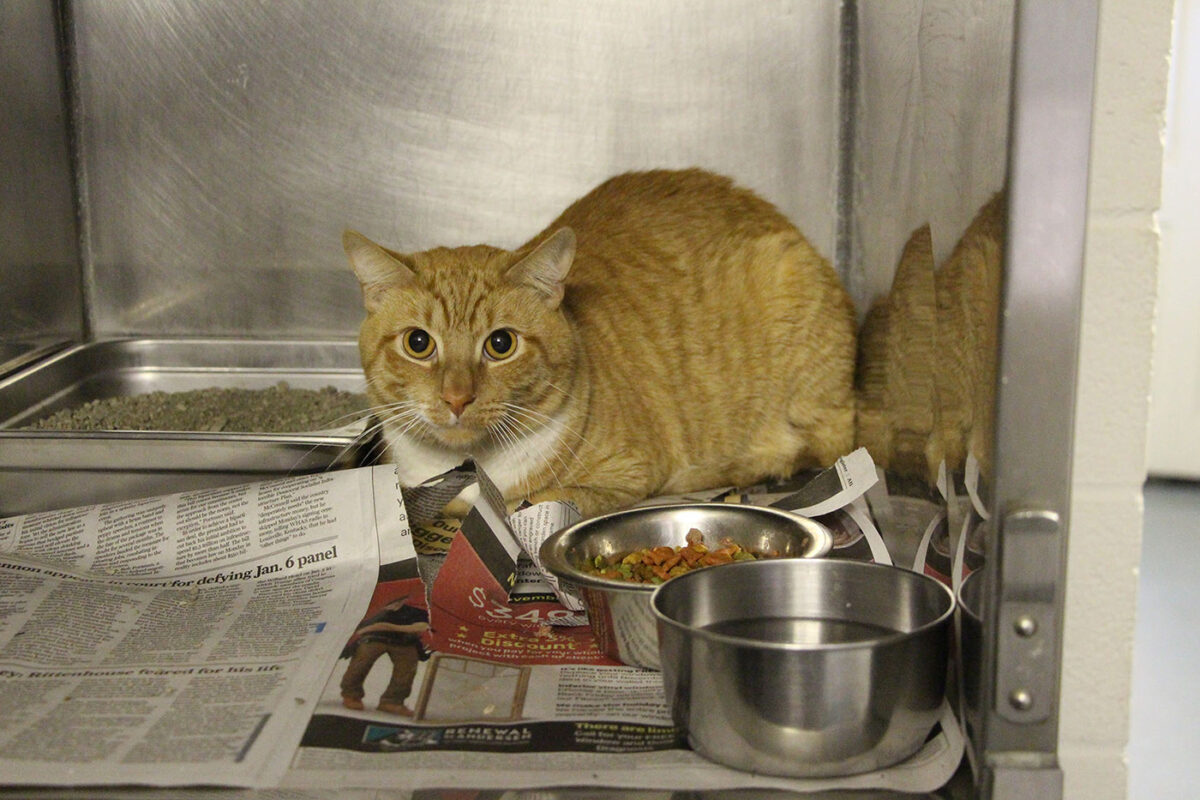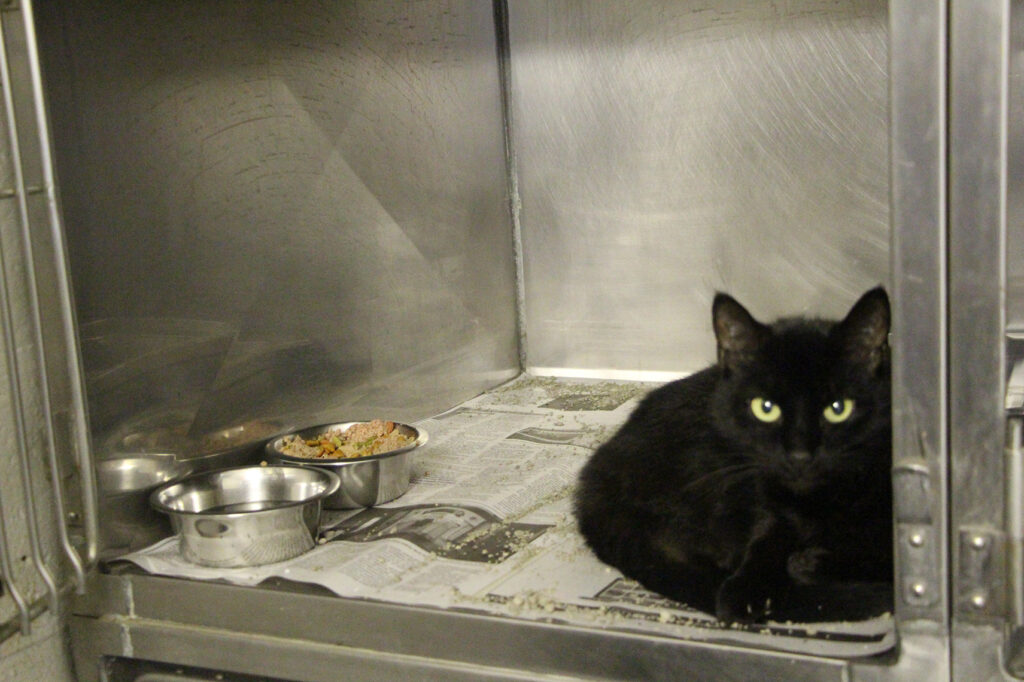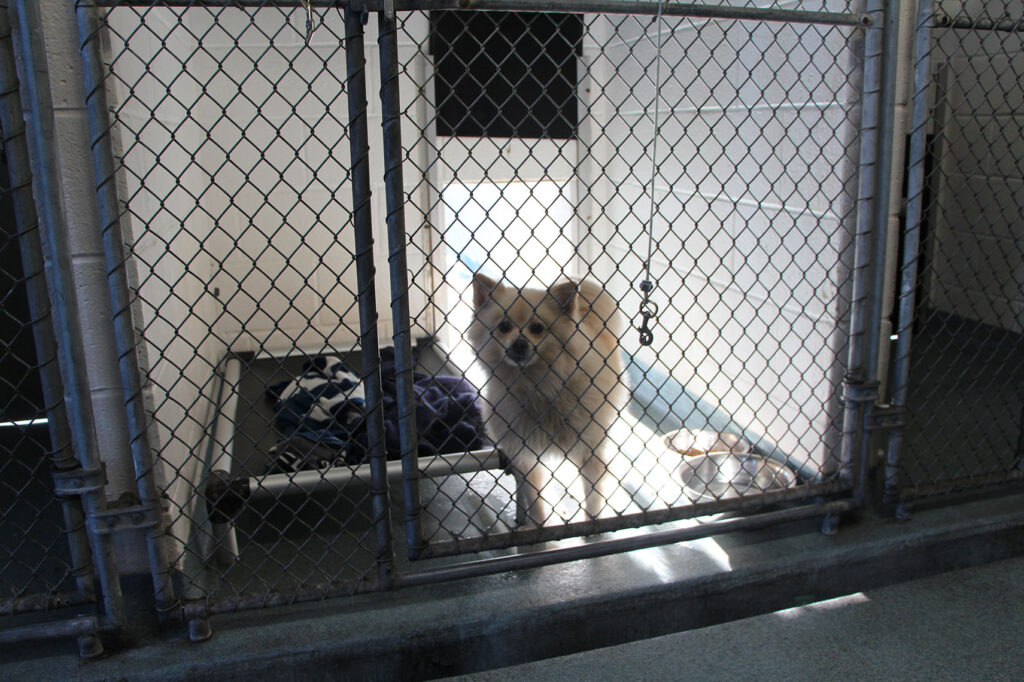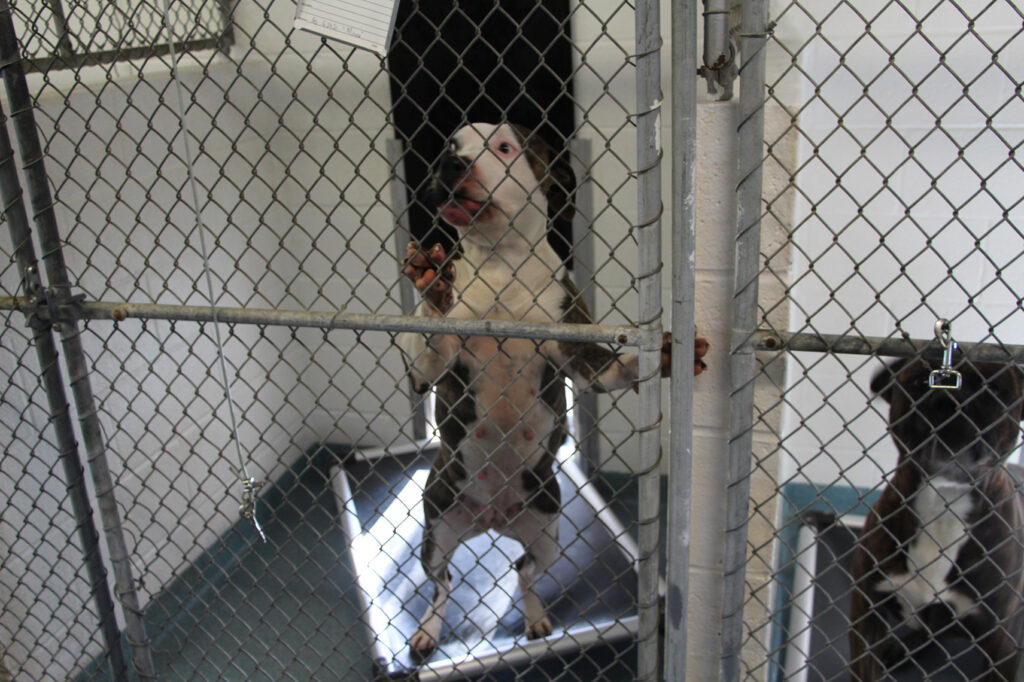The town of Hamden, Connecticut, has been bleeding money on different animal shelters for decades, but nothing more has been done than a few band-aids.
As a new mayor takes office for the first time in half a decade, a new shelter may be on the table, bringing an end to an uncertainty present in the town for nearly 20 years.
A Sheltered History
Over 70 years ago Hamden had a small animal shelter, which sat on the former Hamden landfill; following its closure, the town used a shelter at a grooming facility. Once that agreement ended, Hamden’s animals rested at the Merryfield Veterinary Hospital — until 2005.
Under Connecticut state law, “[e]ach city or town, other than towns participating in a regional dog pound, shall provide and maintain for use as a dog pound a suitable building, which shall be made comfortable for the detention and care of dogs and other domestic animals and kept in a sanitary condition.”
In 2004, Hamden entered into a six-month agreement with the town of North Haven that allowed Hamden to use North Haven’s animal shelter without liability to North Haven, thereby freeing them of any responsibilities (the liability ended after the first six months).
That agreement was extended until February 2019, when North Haven First Selectman Michael J. Freda sent former Hamden Mayor Curt B. Leng a notice that Hamden would have to leave the shelter by May.
The deal with North Haven was never meant to be permanent, as it was initially only agreed upon for six months, and a Hamden shelter was supported by the late Mayor Craig B. Henrici in 2009. Henrici had wanted to build the shelter on the town-owned portion of the former Maselli farm on Gilbert Avenue, which estimates had pegged at costing $1.4 million, according to the New Haven Register.
In the 2010 elections for mayor Democrat Scott Jackson, who won the election and now serves as the finance director for his “protégé” Leng, was supportive of plans for a shelter.
Later that year, Jackson and Freda worked together on sites for a possible animal shelter; Jackson and then state Rep. J. Brendan Sharkey (D-Hamden) also spoke about a regional shelter.
“It’s less expensive for taxpayers of both towns to do a consolidated facility,” Jackson told the New Haven Register. No such plans came to fruition during the Jackson administration, although Leng achieved moderate progress towards such a goal.
Hamden approved $700,000 for beginning costs for the construction of an animal shelter in July 2015; later the town bonded $400,00 to build a regional shelter, which would be run by both Hamden and North Haven. Leng told the Register that while it wasn’t enough money to actually fund a shelter, it was a demonstration “to show residents (the administration) took the need seriously.”
State Senate President Martin M. Looney (D-New Haven) along with three Democratic State representatives of Hamden sent former Gov. Dannel Malloy a request for funding a regional shelter with North Haven in 2017.
A 2018 proposal submitted by former Hamden Police Department Chief Thomas Wydra almost became a reality, however, Leng said that “the plans fell through.” Wydra had proposed that Hamden have its own wing within Woodbridge’s new shelter at an estimated cost of $200,000.
In 2020, Leng announced a solution on Facebook involving a prefabricated unit that could be used as a shelter. Leng told CT Insider that a prefab would be a fraction of the cost of building a shelter, with all the same amenities, at just $450,000, rather than the $1 million officials had claimed in the past.
A History of Financial Instability
The animal shelter is just one of many examples of Hamden’s economic woes. In 2019, Hamden was ranked No.1. in the state for debt per capita, at $19,021 per person, and its taxes have been steadily increasing for years — since 2016 Hamden’s property tax and mill rate has gone up 13.7%.
Hamden has had a history of running at a deficit, which has led to projects being underfunded and initiatives stalled. Of that $400,00 allocated specifically to the animal shelter, $250,00 was redirected to expand the Brooksvale Park in 2020. Due to push back from councilmembers like Justin Farmer (D-5), that money was mandated to be returned to the fund at a later date.
“We were all in favor of [the allocation]. Friends of Brooksvale — we consider them our cousins,” said Lenny Young, founder of the nonprofit organization Gimme Shelter. “The money had to come from the town, so the state could max the funds. So, that money was borrowed from the $400,00 and Justin Farmer held that vote up until language was added so that money could be reapplied.”
Young created the organization in 2016 after he saw abandoned animals and got tired of not having a shelter. The organization began collecting donations, which led to the town creating a gift fund for the shelter and has since amassed over $30,000.
Young expressed his annoyance with the difficulty of getting a new shelter, both with the Leng administration and those prior.
“This is not partisan, there’s broad support in the council,” Young said. “However, it’s like playing whack-a-mole. Every time there’s a new administration or a police chief, it’s like starting over.”
Another example is the pension fund for government workers, which has been historically underfunded, Fiscal Stability Committee Member Christian McNamara said.
“So historically instead of making the full contribution that we should have been making to the pension funds, we made kind of a partial contribution, which had the effect of keeping our expenses lower in those years,” McNamara said. “Therefore, allowing us to keep taxes lower than they should have been in those early years, but which had the effect of causing those pension liabilities to continue growing and growing and growing for a time.”’
The 2008 financial crisis that crippled the nations’ economy also affected Hamden.
“So, when the housing crisis happened, right before it, we doubled down and put a lot of our pension funds into the housing scheme, and so we lost more money,” Farmer said.
The town budget has also inherently been oversold. In order to avoid raising taxes and forcibly balancing the budget, the town has created “widely optimistic” assumptions. In the 2019-2020 town budget, Hamden budgeted $2.1 million in donations from Quinnipiac, yet they only received $500,000.
“It’s just a number that they came up with, and it had the effect of making it look as if the budget would balance; but then, not surprisingly, we didn’t get the 2.1 million from Quinnipiac,” McNamara said. “We got half a million from Quinnipiac, which is more consistent with what we’ve gotten historically. So, we had a significant revenue shortfall in the budget.”
A Sheltered Future
With Hamden’s elections over and Democrat Lauren Garrett newly elected, with a democratic majority on the legislative council, an animal shelter may finally arrive in Hamden.
While both leading candidates for mayor in Hamden supported the creation of a shelter, their chosen locations differed. Mayor Garrett has looked at several locations in Hamden, including several along Sherman Avenue. The plot at 551 Sherman Ave. has been looked at by town officials, including some in the Hamden Police Department, as a potential home for a shelter. However, the plot is owned by Quinnipiac, not the town.
That specific property on Sherman Avenue is prime real estate for a shelter and stands near “The Barking Lot,” a “doggie daycare” and training facility, and “Paws ‘N Effect,” which provides training, therapy and a pet-store.
However, Associate Vice President for Public Relations at Quinnipiac John Morgan cast doubt over the possible transfer.
“The possibility of transferring the parcel to the town has been discussed over the years but no plan was ever finalized,” Morgan said.
Garrett herself has not identified other potential spots for a shelter, although she told the New Haven Register that a site would be named within her first 100 days in office.
The mayor is focused on providing a solution, and doing so quickly, to comply with state law requiring towns to have a designated shelter.
“Well, we don’t have an agreement where…the North Haven agreement has not gone over very well for Hamden,” Garrett said. “We’ve been thrown out of there, and then given some space. It’s not a stable option for us.
Garrett is a fan of building a regional shelter, which could be more manageable than an animal shelter funded only by Hamden. Estimates of how much a shelter could cost range between $1.1 and $1.4 million dollars.
“Well, I think that it’s really important for us to seek regional opportunities because that could bring in some state funding,” Garrett said. “It could also mean that we’re not solely responsible for the costs of maintenance and managing the personal costs of managing a facility.”
A regional shelter, as opposed to a municipal shelter run only by Hamden, is favored by Farmer, who joined Garrett’s Row A slate and won re-election to the fifth district in November.
“…I know there’s a lot of people who want a dedicated Hamden animal shelter,” Farmer said. “But one, it’s not something we can really afford, and two — there’s no really good reason to have it in Hamden, besides Hamden wants one in Hamden.”
Farmer wants to create an “ironclad agreement” with neighboring towns to create a regional shelter, as opposed to lease agreements that are more unreliable.
“If our main concern is making sure for the health and wellbeing of the animals, we should never be in a position where we’re deciding how much money and resources are being allocate to housing abandoned animals, mistreated animals, and relocating them,” Farmer said.
When asked for her perspective about why a shelter would take so long to be created, Garrett cited “a lack of follow-through,” from Leng. For his part, Leng denies that the issues with a Hamden shelter lies with him, and instead it’s a matter of priorities. Leng cited the annual cost of a regional shelter, and its failure, as the main reason.
“After [it failed] I couldn’t prioritize asking for [the] additional funding we would need to construct a Hamden-only shelter, over a new Fire Station #2, which is in deplorable shapes [and] is where our firefighters live,” Leng said. “In addition, major renovations to the Keefe Community Center was a top priority for me.”
Leng added that the town made applications for state grants for both renovations, but the pandemic slowed the grant process, and that even if Hamden didn’t win the grants, both projects had priority over a shelter.
Ultimately, only time will tell if a shelter will finally come to Hamden, but Garrett seems to be promising a solution in the near-future.
“…I think that we also need an animal shelter to take care of our animals and it gives more adoption opportunities,” Garrett said.
“And we have a lot of elderly people living in our community and I know that they would want an option, a solution, for their pets if something were to happen to them, if they had to go into an elderly care facility or something like that. People want to make sure that their pets will be taken care of if they’re no longer able to.”





